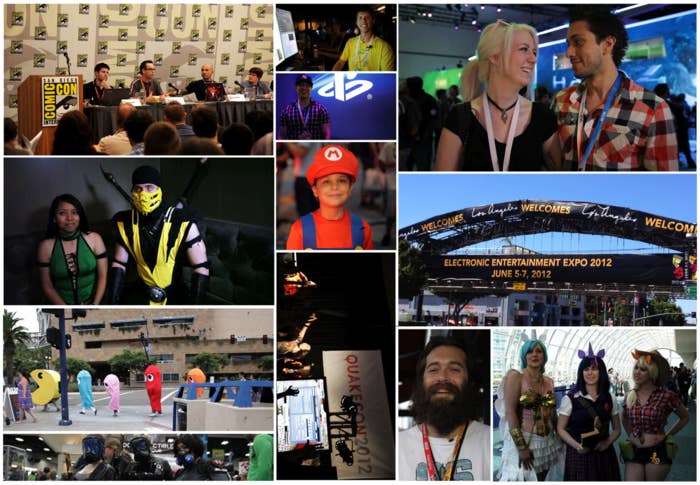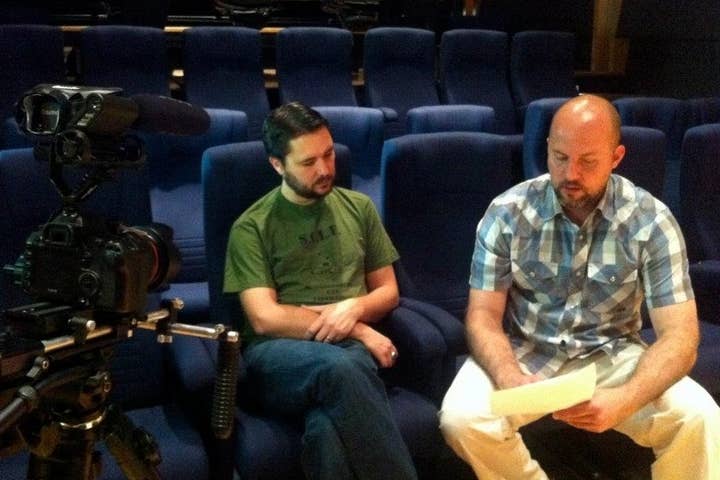The Past, Present And Future Of Games
The director of Video Games: The Movie opens up about the medium's standing today, and the bright future that awaits
For the last year of his life, Jeremy Snead has lived and breathed video games. But when you want to tell the story of an industry, a community and a culture, that's how long it takes.
With his forthcoming film, Video Games: The Movie, Snead will become the first director to tell the whole story of video games in a feature-length documentary. Now in post-production, Snead is assembling testimony from 35 of the most significant figures in the history of the medium, from Nolan Bushnell, Warren Spector and Tim Willits, to Randy Pitchford, Cliff Bleszinski and Yoshinori Ono. "This film has been a real passion project for me," Snead says. "My hope is that the film will also tear down some of the misconceptions attached to the video game industry and the gaming community at large."
But what does a year in the company of the medium's brightest talents and most passionate fans teach you? In this exclusive article for GamesIndustry International, Snead assesses where games came from and where they are headed, from the glimmering screens of the arcade to the enveloping allure of virtual reality.
Playing a video game in the year 2013 is a very different experience than it was in 1975. But after my experiences making my film, talking to some of the greatest talents in the industry, I now think it has come full-circle.

The first video games created a new cultural centre: the arcade, a focal point around which people congregated and built a strange, passionate new community. Nobody understood it at first, but that didn't prevent it from growing. More than 30 years later that community has evolved, grown a lot bigger, and games are now a part of almost every home, giving rise to a whole new generation who won't remember a world without the opportunity to play together in virtual space. That experience and that community are no longer restricted to a single, dark room with a handful of upright cabinets; it's now truly global, with millions of players on every continent connecting with each other and building lifelong relationships.
"Most people understand that a painting arises from a canvas, some paint and a skilled artisan with a brush, but how does an idea become an immersive game experience?"
And you would think that's a good thing, right? For the most part, yes, but the sad truth is that even after decades of growth and evolution, video games are still largely misunderstood and under-estimated as an entertainment medium, and as an art form - as is the industry that creates them and the community that offers their passion and support. Our grandparents could tell us stories about how comic books were once the one and only cause of juvenile delinquency, then it was rock n' roll. Right now it's video games, though that, too, is changing.
I would argue - as do many of the participants in my film - that "things" don't corrupt hearts and minds: it's our response to those things that makes the difference. Adults and kids. Maturity, sacrifice and discipline are all active, ongoing choices for adults, but they are choices that kids have to grow into, with adult supervision and guidance. This guidance applies to every area of a child's life, games included. If you let your 8 year-old play Grand Theft Auto, you're a bad parent. Period.
So what does it all mean? All of these ongoing negative stereotypes and knee-jerk reactions by the media and the misinformed public create a persistent backlash against the gaming community. If you're a real gamer you're the "pale, overweight kid living in your mom's basement," you're the "anti-social recluse." Those are the easy examples, and there are others. But the bigger issue is gaming's acceptance as an art form of equal weight as any other, as a valuable past-time, and a way to bring people together.
It will happen eventually, and my film is an attempt to make it happen that little bit sooner.

The suspension of disbelief has always been a part of the narrative of humanity. Our desire to escape the daily treadmill of life, if even for a short while each day, has been with us since the cave paintings of Lascaux, with camp-fire stories - and now we have created virtual realities within which more stories can be created and told. One of the major goals of my film is to show how this amazing, interactive art form comes to life in 2013. Most people understand that a painting arises from the confluence of a canvas, some paint and a skilled artisan with a brush, but how does an idea become an immersive game experience? My film aims to answer that question in depth with some of the biggest and smallest game developers working today.
Another big question is the future. What will games look like in 10 or 20 years? Is more processing power, bigger and better displays, and more haptic feedback the answer? Partly it is, yes. The more tools the industry can use to create total immersion, the better. Why not make the camp-fire story that much more vivid. What about virtual reality you say? I think everyone is holding their breath on what will happen with the Oculus Rift, and how it will be accepted by the public. I think that's potentially a huge next step, and when combined with the next generation of consoles from Sony and Microsoft, well, I'm just glad that I'll be around to experience it.
Jeremy Snead is the founder of Mediajuice Studios, a leading producer of game trailers, promos and TV campaigns. His documentary film, Video Games: The Movie, is the first feature-length exploration of the past, present and future of games and game culture. To learn more, visit the film's Kickstarter page.








